
|
Now it is bright as 7.0 mag (Aug. 8, Marco Goiato). It is expected to brighten up to 5 mag from autumn to winter. It keeps observable in excellent condition until autumn in the Southern Hemisphere. In the Northern Hemisphere, it keeps unobservable until late November.
Date(TT) R.A. (2000) Decl. Delta r Elong. m1 Best Time(A, h)
Aug. 8 21 27.58 -70 46.7 1.106 1.885 125 7.6 0:31 ( 0,-15)
Aug. 15 19 7.74 -73 48.2 1.089 1.792 116 7.3 21:23 ( 0,-19)
|

|
It approached to the sun down to 0.3 a.u. on July 6, and brighted up to 3.9 mag (July 6, Thomas Lehmann). Now it is 8.3 mag (Aug. 7, Marco Goiato). In the Northern Hemisphere, it keeps observable until the comet fades out. It will not be observable after this in the Northern Hemisphere.
Date(TT) R.A. (2000) Decl. Delta r Elong. m1 Best Time(A, h)
Aug. 8 11 3.92 -16 2.4 1.332 0.908 42 8.4 20:31 ( 80,-16)
Aug. 15 11 32.35 -22 58.2 1.439 1.050 46 9.2 20:21 ( 73,-17)
|

|
It brightened up to 3.7 mag and became a naked eye comet in mid January (Jan. 13, Marek Biely). Now it is fading. But it is bright as 10.1 mag still now (Aug. 7, Maik Meyer). In the Northern Hemisphere, it keeps observable for a long time until the comet fades out. It is not observable in the Southern Hemisphere.
Date(TT) R.A. (2000) Decl. Delta r Elong. m1 Best Time(A, h)
Aug. 8 15 19.07 54 31.4 2.924 2.890 78 10.1 20:31 (140, 59)
Aug. 15 15 25.98 51 17.5 3.017 2.965 77 10.3 20:21 (133, 59)
|

|
It brightened rapidly. Now it is so bright as 10.5 mag (Aug. 7, Marco Goiato). It keeps 10-11 mag until August. It is observale in good condition in the Northern Hemisphere, but it will be getting lower gradually in the Southern Hemisphere.
Date(TT) R.A. (2000) Decl. Delta r Elong. m1 Best Time(A, h)
Aug. 8 19 21.91 33 59.1 0.851 1.644 123 11.0 22:14 ( 0, 89)
Aug. 15 19 9.28 37 25.5 0.907 1.645 117 11.2 21:34 (180, 87)
|
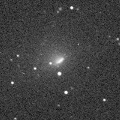
|
Now it is 11.7 mag (Aug. 7, Marco Goiato). It will brighten up to 11 mag autumn. In this apparition, it is observable until the highlight while the comet is brightening.
Date(TT) R.A. (2000) Decl. Delta r Elong. m1 Best Time(A, h)
Aug. 8 13 38.68 -5 53.8 1.804 1.743 70 11.7 20:31 ( 66, 21)
Aug. 15 13 52.42 -7 28.8 1.831 1.714 67 11.5 20:21 ( 66, 19)
|

|
It is fading, but bright as 11.6 mag still now (Aug. 8, Marco Goiato). It keeps observable in good condition until winter when the comet becomes fainter than 18 mag.
Date(TT) R.A. (2000) Decl. Delta r Elong. m1 Best Time(A, h)
Aug. 8 2 42.34 11 33.2 1.520 1.873 93 12.3 3:39 (303, 54)
Aug. 15 2 48.40 12 1.8 1.490 1.919 98 12.6 3:46 (313, 59)
|
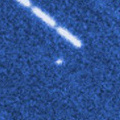
|
It brightened up to 12.8 mag until March (Mar. 21, Michael Mattiazzo). It must have brightened up to 10.5 mag in May and June, but it was not observable. In the Northern Hemisphere, it will be observable after autumn while the comet will be fading.
Date(TT) R.A. (2000) Decl. Delta r Elong. m1 Best Time(A, h)
Aug. 8 8 37.67 31 48.4 2.516 1.575 17 12.4 3:39 (228, -2)
Aug. 15 9 1.17 31 32.8 2.540 1.616 19 12.6 3:46 (230, 0)
|
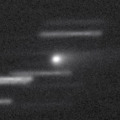
|
Now it is 12.9 mag (July 27, Chris Wyatt). It will brighten up to 12 mag from August to October. In the Northern Hemisphere, it is getting higher gradually, and it keeps observable in good condition after this. In the Southern Hemisphere, it keeps low until November.
Date(TT) R.A. (2000) Decl. Delta r Elong. m1 Best Time(A, h)
Aug. 8 6 8.64 24 7.3 1.777 1.245 42 12.6 3:39 (254, 20)
Aug. 15 6 37.22 24 24.2 1.770 1.243 43 12.5 3:46 (255, 22)
|
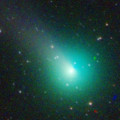
|
It brightened up to 6.0 mag in mid May (May 14, Chris Wyatt). Now it is fading. It has faded down to 9.0 mag in late June (June 21, Marco Goiato). It is not observable now. In the Southern Hemisphere, it will be observable again after September, but the comet will be fainter than 13 mag.
Date(TT) R.A. (2000) Decl. Delta r Elong. m1 Best Time(A, h)
Aug. 8 8 29.91 14 52.9 2.560 1.570 9 12.5 3:39 (242,-12)
Aug. 15 8 33.08 15 40.7 2.622 1.666 15 12.8 3:46 (246, -6)
|

|
Now it is 12.9 mag (July 11, Gabor Santa). In 2015, it keeps 13-14 mag and will be observable in good condition for a long time.
Date(TT) R.A. (2000) Decl. Delta r Elong. m1 Best Time(A, h)
Aug. 8 19 10.14 -10 43.3 2.722 3.639 150 13.3 22:04 ( 0, 44)
Aug. 15 19 9.27 -11 12.5 2.790 3.659 144 13.4 21:35 ( 0, 44)
|

|
It brightened up to 13.4 mag in outburst on July 11 (John Drummond). It brightened up to 12.3 mag in outburst again on July 23 (Jean-Francois Soulier).
Date(TT) R.A. (2000) Decl. Delta r Elong. m1 Best Time(A, h)
Aug. 8 17 16.59 -30 24.3 5.376 6.019 125 13.5 20:31 ( 5, 24)
Aug. 15 17 15.95 -30 12.5 5.467 6.017 118 13.5 20:21 ( 9, 24)
|
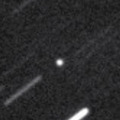
|
Now it is 16.2 mag (July 18, Taras Prystavski). It keeps observable after this while the comet will be getting brighter graudually. It will brighten up to 11 mag from autumn to winter. But it locates low at that time.
Date(TT) R.A. (2000) Decl. Delta r Elong. m1 Best Time(A, h)
Aug. 8 14 29.53 -4 36.9 1.563 1.737 81 14.0 20:31 ( 58, 31)
Aug. 15 14 40.07 -6 26.8 1.588 1.699 78 13.7 20:21 ( 58, 28)
|
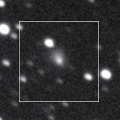
|
Now it is 15.1 mag (Apr. 17, Taras Prystavski). It will pass close to the earth from spring to summer in 2016, and it is expected to be observable at 6-7 mag in good condition. In the Northern Hemispehre, it will be getting higher gradually in the morning sky, then it keeps observable in excellent condition until winter. In the Southern Hemisphere, it will be observable after mid August, but it keeps very low until winter.
Date(TT) R.A. (2000) Decl. Delta r Elong. m1 Best Time(A, h)
Aug. 8 5 39.89 35 42.5 4.151 3.588 50 14.1 3:39 (246, 31)
Aug. 15 5 42.31 36 7.9 3.976 3.517 56 14.0 3:46 (248, 37)
|

|
Now it is 14.1 mag and visible visually (July 10, Jakub Cerny). Distant object, but it keeps observable at 14-15 mag for a long time from 2015 to 2016.
Date(TT) R.A. (2000) Decl. Delta r Elong. m1 Best Time(A, h)
Aug. 8 21 22.24 -1 50.7 4.334 5.321 165 14.4 0:19 ( 0, 53)
Aug. 15 21 19.88 -2 16.5 4.308 5.301 167 14.4 23:45 ( 0, 53)
|
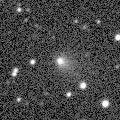
|
Now it is bright as 15.3 mag (July 17, S. Shurpakov). It is expected to brighten up to 15 mag from autum to next spring, and to be observable in excellent condition in the Northern Hemisphere. It keeps unobservable in the Southern Hemisphere.
Date(TT) R.A. (2000) Decl. Delta r Elong. m1 Best Time(A, h)
Aug. 8 2 38.41 52 31.8 2.483 2.544 81 14.7 3:39 (221, 63)
Aug. 15 2 45.42 56 20.7 2.376 2.500 84 14.5 3:46 (208, 64)
|
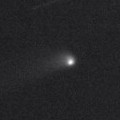
|
Now it is 16.5 mag (July 10, A. Maury, J.-G. Bosch, T. Noel). It will brighten up to 14 mag from 2015 to 2016. It keeps observable in good condition for a while.
Date(TT) R.A. (2000) Decl. Delta r Elong. m1 Best Time(A, h)
Aug. 8 3 9.79 10 34.4 4.116 4.187 87 14.8 3:39 (297, 49)
Aug. 15 3 6.35 11 9.7 3.984 4.184 94 14.7 3:46 (307, 56)
|

|
It brightened very rapidly, and brightened up to 13.8 mag (May 11, Sandor Szabo). It is not observable already in the Northern Hemisphere. It will be unobservable soon also in the Southern Hemisphere.
Date(TT) R.A. (2000) Decl. Delta r Elong. m1 Best Time(A, h)
Aug. 8 10 44.76 -1 7.2 4.298 3.449 29 14.9 20:31 ( 96,-11)
Aug. 15 10 53.95 -2 8.2 4.343 3.455 25 15.0 20:21 ( 97,-14)
|

|
Now it is 15.6 mag (Apr. 9, Taras Prystavski). It keeps 13 mag for a long time from 2015 autumn to 2016 summer. In the Northern Hemispehre, it keeps observable in good condition for a long time. It keeps unobservable in the Southern Hemisphere.
Date(TT) R.A. (2000) Decl. Delta r Elong. m1 Best Time(A, h)
Aug. 8 5 49.62 46 52.5 4.011 3.466 51 15.1 3:39 (233, 33)
Aug. 15 5 58.83 48 30.8 3.884 3.423 56 15.0 3:46 (232, 38)
|
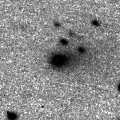
|
First return of a periodic comet discovered in 1994. Now it is 16.0 mag (June 27, iTelescope Observatory, Siding Spring). It will brighten up to 15 mag from summer to autumn, and will be observable in excellent condition in the Southern Hemisphere. It locates somewhat low in the Northern Hemisphere.
Date(TT) R.A. (2000) Decl. Delta r Elong. m1 Best Time(A, h)
Aug. 8 23 4.47 -35 29.8 1.623 2.540 148 15.1 2:01 ( 0, 20)
Aug. 15 23 1.50 -35 48.7 1.589 2.525 151 15.0 1:31 ( 0, 19)
|

|
Now it is 14.9 mag (July 23, Taras Prystavski). It keeps 15 mag for a long time from 2014 to 2015. It is observable in excellent condition in the Northern Hemisphere. It locates low in the Southern Hemisphere.
Date(TT) R.A. (2000) Decl. Delta r Elong. m1 Best Time(A, h)
Aug. 8 2 23.72 33 2.8 3.955 4.089 90 15.1 3:39 (268, 69)
Aug. 15 2 23.32 34 39.0 3.873 4.108 96 15.1 3:46 (267, 76)
|
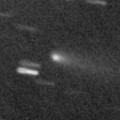
|
Now it is 14.6 mag and visible visually (July 12, Jakub Cerny). It will be observable in excellent condition at 14-15 mag in summer.
Date(TT) R.A. (2000) Decl. Delta r Elong. m1 Best Time(A, h)
Aug. 8 0 31.23 5 40.5 1.087 1.868 125 15.3 3:28 ( 0, 61)
Aug. 15 0 33.10 5 41.1 1.060 1.893 131 15.4 3:02 ( 0, 61)
|

|
It brightened up to 6.9 mag in 2014 autumn (Oct. 17, Marco Goiato). Now it is fading. It has already faded down to 15.1 mag (July 26, Taras Prystavski). In the Southern Hemisphere, it keeps observable in good condition until the comet fades out. In the Northern Hemisphere, it keeps observable until winter, but it locates somewhat low.
Date(TT) R.A. (2000) Decl. Delta r Elong. m1 Best Time(A, h)
Aug. 8 0 21.60 -24 16.5 3.824 4.592 134 15.3 3:18 ( 0, 31)
Aug. 15 0 13.47 -25 14.3 3.825 4.661 141 15.4 2:43 ( 0, 30)
|

|
It was reported so bright as 14.6 mag visually (July 11, Jakub Cerny). However, it is faint as 16.1 mag by CCD observations (July 25, Katsumi Yoshimoto). It was expected to brighten rapidly up to 11 mag from summer to autumn. But actually, maybe it brightens up to 15 mag at best. In the Northern Hemisphere, it keeps observable in good condition in the morning sky. It keeps locating extremely low from summer to autumn.
Date(TT) R.A. (2000) Decl. Delta r Elong. m1 Best Time(A, h)
Aug. 8 5 32.05 34 53.9 0.796 0.814 51 15.5 3:39 (247, 32)
Aug. 15 6 18.50 32 11.3 0.863 0.780 48 15.4 3:46 (249, 29)
|

|
Now it is 19 mag (June 13, WISE). It is expected to brighten rapidly up to 15 mag in August. It is observable in good condition in the Southern Hemisphere. It locates somewhat low in the Northern Hemisphere until August.
Date(TT) R.A. (2000) Decl. Delta r Elong. m1 Best Time(A, h)
Aug. 8 13 49.68 -10 48.5 0.303 0.977 74 15.8 20:31 ( 60, 20)
Aug. 15 14 25.93 -10 46.6 0.260 0.983 76 15.5 20:21 ( 57, 23)
|
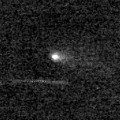
|
Now it is 16.4 mag (July 22, Taras Prystavski). It will be observable at 15 mag in good condition in autumn.
Date(TT) R.A. (2000) Decl. Delta r Elong. m1 Best Time(A, h)
Aug. 8 2 0.06 9 17.0 1.677 2.156 103 15.9 3:39 (321, 59)
Aug. 15 2 8.27 9 31.8 1.598 2.146 108 15.8 3:46 (333, 62)
|

|
Now it is 15.5 mag (Mar. 28, Taras Prystavski). It keeps 15-16 mag for a long time until 2016. It keeps observable in excellent condition in the Northern Hemisphere. It keeps unobservable in the Southern Hemisphere.
Date(TT) R.A. (2000) Decl. Delta r Elong. m1 Best Time(A, h)
Aug. 8 5 4.70 50 55.1 5.649 5.206 59 15.9 3:39 (230, 41)
Aug. 15 5 10.64 52 9.6 5.559 5.201 64 15.9 3:46 (229, 46)
|

|
Now it is 16.0 mag (May 26, Yasukazu Ikari). It is observable at 15-16 mag in good condition until autumn. It locates somewhat low in the Northern Hemisphere.
Date(TT) R.A. (2000) Decl. Delta r Elong. m1 Best Time(A, h)
Aug. 8 17 47.97 -24 44.5 7.392 8.110 132 16.0 20:42 ( 0, 30)
Aug. 15 17 44.57 -25 1.4 7.520 8.141 124 16.0 20:21 ( 3, 30)
|

|
It brightened up to 13 mag in 2014. Now it is 15.7 mag (July 23, Taras Prystavski). It will be fading slowly after this. It is observable at 16 mag in excellent condition from summer to winter in 2015.
Date(TT) R.A. (2000) Decl. Delta r Elong. m1 Best Time(A, h)
Aug. 8 1 41.19 2 24.3 3.322 3.797 110 16.0 3:39 (334, 55)
Aug. 15 1 41.77 2 21.0 3.245 3.812 116 16.0 3:46 (349, 57)
|
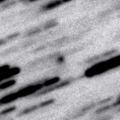
|
It brightened up to 16.4 mag in 2014 (Nov. 14, J. F. Hernandez). Now it is 17.5 mag (June 28, B. Lutkenhoner, M. Kumrucu-Lohmiller, P. Cox). It will be observable at 16 mag again from summer to autumn in 2015. However, it is fainter than this ephemeris recently.
Date(TT) R.A. (2000) Decl. Delta r Elong. m1 Best Time(A, h)
Aug. 8 3 38.54 25 13.8 2.373 2.357 76 16.2 3:39 (272, 51)
Aug. 15 3 48.17 25 51.7 2.314 2.379 81 16.2 3:46 (275, 57)
|
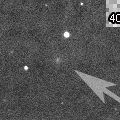
|
Now it is 13.6 mag (June 27, Chris Wyatt). It is getting higher gradually in the morning sky. However, it will be fading rapidly, and will be fainter than 18 mag in late August.
Date(TT) R.A. (2000) Decl. Delta r Elong. m1 Best Time(A, h)
Aug. 8 4 50.07 4 50.3 2.390 2.158 64 16.3 3:39 (283, 26)
Aug. 15 5 0.05 4 29.9 2.366 2.208 68 16.8 3:46 (287, 30)
|

|
First return of a periodic comet discovered in 2008. Now it is 16.8 mag (June 21, J. Nicolas, C. Rinner, F. Kugel, A. Klotz). It approaches to the earth and it is observable at 16 mag in good condition from spring to summer.
Date(TT) R.A. (2000) Decl. Delta r Elong. m1 Best Time(A, h)
Aug. 8 3 6.39 -5 40.0 0.751 1.287 92 16.8 3:39 (313, 37)
Aug. 15 3 21.41 -6 14.2 0.763 1.321 95 16.9 3:46 (319, 40)
|

|
Now it is 16.4 mag (June 12, Takaaki Oribe). It is fading, but it is observable at 17 mag in good condition until late autumn. The fragments B and C are already fainter than 20 mag (June 12, Takaaki Oribe).
Date(TT) R.A. (2000) Decl. Delta r Elong. m1 Best Time(A, h)
Aug. 8 23 29.71 8 39.7 5.387 6.170 137 16.8 2:27 ( 0, 64)
Aug. 15 23 25.17 7 49.4 5.358 6.216 145 16.8 1:54 ( 0, 63)
|
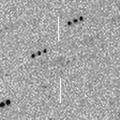
|
First return of a new periodic comet which brightened up to 12 mag in 2009. Now it is 18.3 mag (June 10, Hidetaka Sato), fainter than this ephemeris by 1 mag. It will be 17-18 mag at best in this apparition. It is observable in good condition in the Southern Hemisphere. In the Northern Hemisphere, it keeps locating extremely low after June.
Date(TT) R.A. (2000) Decl. Delta r Elong. m1 Best Time(A, h)
Aug. 8 12 56.39 -12 0.8 1.577 1.433 62 16.8 20:31 ( 68, 9)
Aug. 15 13 19.27 -12 52.7 1.603 1.431 61 16.9 20:21 ( 67, 9)
|
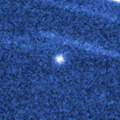
|
Now it is 16.5 mag (June 3, Taras Prystavski). In the Northern Hemisphere, it is getting higher gradually in the morning sky. In the Southern Hemisphere, it locates extremely low, and will be unobservable in August.
Date(TT) R.A. (2000) Decl. Delta r Elong. m1 Best Time(A, h)
Aug. 8 5 43.41 30 24.7 1.691 1.278 48 16.9 3:39 (251, 28)
Aug. 15 6 9.39 32 31.2 1.690 1.301 50 16.9 3:46 (250, 31)
|

|
Now it is 18 mag (July 16, WISE). It is expected to brighten rapidly, and to be observable at 14.5 mag in good condition in autumn.
Date(TT) R.A. (2000) Decl. Delta r Elong. m1 Best Time(A, h)
Aug. 8 2 34.49 -4 23.2 1.346 1.816 99 17.2 3:39 (320, 43)
Aug. 15 2 49.65 -4 28.5 1.260 1.778 102 17.0 3:46 (327, 45)
|
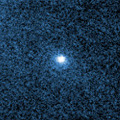
|
Now it is 16.5 mag (June 3, Taras Prystavski). It keeps observable in good condition until the comet fades out. In 2014, it must have been observable at 14 mag in good condition in the Southern Hemisphere.
Date(TT) R.A. (2000) Decl. Delta r Elong. m1 Best Time(A, h)
Aug. 8 0 50.40 1 26.9 3.330 3.971 122 17.1 3:39 (356, 56)
Aug. 15 0 48.09 1 44.6 3.296 4.021 129 17.1 3:17 ( 0, 57)
|
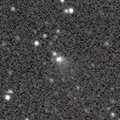
|
Now it is 15.6 mag (July 8, Taras Prystavski). It will be fading after this, and will be fainter than 18 mag in September.
Date(TT) R.A. (2000) Decl. Delta r Elong. m1 Best Time(A, h)
Aug. 8 16 51.12 -7 3.7 1.076 1.776 116 17.2 20:31 ( 17, 47)
Aug. 15 17 0.90 -7 26.2 1.136 1.786 112 17.3 20:21 ( 19, 46)
|

|
Now it is 17.5 mag (July 25, Katsumi Yoshimoto). It has brightened in outburst up to 14 mag twice, in 2006 January and 2011 May. It is around the perihelion now. It keeps observable at 17 mag for a long time after this.
Date(TT) R.A. (2000) Decl. Delta r Elong. m1 Best Time(A, h)
Aug. 8 23 26.85 -2 48.6 4.992 5.840 143 17.3 2:24 ( 0, 52)
Aug. 15 23 25.16 -3 2.2 4.937 5.843 150 17.2 1:54 ( 0, 52)
|

|
Now it is 16.2 mag (June 21, Space Surveillance Telescope, Atom Site). It keeps observable at 17 mag from spring to summer. It locates somewhat low in the Northern Hemisphere.
Date(TT) R.A. (2000) Decl. Delta r Elong. m1 Best Time(A, h)
Aug. 8 16 39.44 -23 2.9 2.669 3.251 116 17.3 20:31 ( 15, 30)
Aug. 15 16 42.00 -22 49.1 2.766 3.261 110 17.3 20:21 ( 19, 30)
|
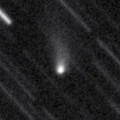
|
It brightened up to 15.3 mag in winter (Jan. 17, Taras Prystavski). Now it is fading. It has already faded down to 16.3 mag (July 22, Taras Prystavski). It keeps observable in good condition for a while. But it will be fainter than 18 mag in September.
Date(TT) R.A. (2000) Decl. Delta r Elong. m1 Best Time(A, h)
Aug. 8 23 0.31 -13 36.8 1.817 2.760 153 17.3 1:58 ( 0, 41)
Aug. 15 22 39.36 -12 57.3 1.825 2.814 164 17.3 1:10 ( 0, 42)
|

|
It keeps 16 mag for a long time from 2015 autumn to 2016 summer. It keeps observable in excellent condition in the Southern Hemisphere. It locates low in the Northern Hemisphere.
Date(TT) R.A. (2000) Decl. Delta r Elong. m1 Best Time(A, h)
Aug. 8 3 24.37 -5 36.4 3.114 3.242 88 17.6 3:39 (308, 34)
Aug. 15 3 22.08 -7 39.7 2.943 3.200 95 17.4 3:46 (319, 38)
|

|
Now it is 17.4 mag (June 14, A. Diepvens). It was observed at 17 mag in 2014 summer. In the Northern Hemisphere, it is observable at 17.5 mag in excellent condition also in 2015. It is not observable in the Southern Hemisphere.
Date(TT) R.A. (2000) Decl. Delta r Elong. m1 Best Time(A, h)
Aug. 8 22 10.44 54 56.8 4.074 4.486 107 17.6 1:07 (180, 70)
Aug. 15 22 6.58 54 36.5 4.056 4.516 110 17.6 0:36 (180, 70)
|

|
It must have brightened up to 11 mag from January to February, but no observations have been reported. Now it is 16.9 mag (July 9, A. Maury, J.-G. Bosch, T. Noel). It will be fainter than 18 mag in late August.
Date(TT) R.A. (2000) Decl. Delta r Elong. m1 Best Time(A, h)
Aug. 8 2 52.59 -11 1.6 2.037 2.386 97 17.6 3:39 (320, 35)
Aug. 15 2 55.76 -11 44.6 2.009 2.438 102 17.7 3:46 (329, 38)
|

|
Now it is 17.2 mag (June 13, iTelescope Observatory, Siding Spring). It will be observable at 17.5 mag in good condition in summer.
Date(TT) R.A. (2000) Decl. Delta r Elong. m1 Best Time(A, h)
Aug. 8 2 45.12 9 41.2 1.240 1.643 93 17.7 3:39 (305, 52)
Aug. 15 2 57.53 9 43.8 1.208 1.666 96 17.7 3:46 (312, 56)
|
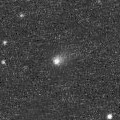
|
It brightened up to 15.3 mag in June (June 21, Space Surveillance Telescope, Atom Site). Now it is fading. It has already faded down to 17.1 mag (July 4, K. Hills). It will be fainter than 18 mag in August. It is observable in excellent condition in the Southern Hemisphere. It locates somewhat low in the Northern Hemisphere.
Date(TT) R.A. (2000) Decl. Delta r Elong. m1 Best Time(A, h)
Aug. 8 16 12.52 -23 42.2 2.139 2.670 110 17.7 20:31 ( 22, 28)
Aug. 15 16 17.57 -23 52.9 2.235 2.682 105 17.8 20:21 ( 25, 27)
|

|
It has not been observed in this apparition yet. It is expected to be observable at 17 mag in good condition from summer to autumn.
Date(TT) R.A. (2000) Decl. Delta r Elong. m1 Best Time(A, h)
Aug. 8 23 46.11 -3 47.9 1.665 2.525 139 18.0 2:43 ( 0, 51)
Aug. 15 23 46.42 -4 7.4 1.607 2.514 146 17.8 2:15 ( 0, 51)
|
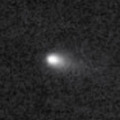
|
It brightened up to 15.9 mag in June as predicted (June 23, Ken-ichi Kadota). It was expected to be observable at 13 mag in good condition from summer to autumn. However, Jean-Gabriel Bosch detected the comet became disintegrating in July. Now it is so faint as 18.7 mag (July 13, Jean-Gabriel Bosch). The fragment D was also observed at 21.9 mag in May (May 30, Pan-STARRS 1).
Date(TT) R.A. (2000) Decl. Delta r Elong. m1 Best Time(A, h)
Aug. 8 1 43.62 1 23.2 1.059 1.700 110 17.9 3:39 (334, 54)
Aug. 15 1 54.44 1 59.1 1.013 1.700 114 17.8 3:46 (343, 56)
|
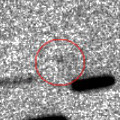
|
Now it is 17.0 mag (June 20, iTelescope Observatory, Siding Spring). First return of a comet re-discovered after 112-year blank in 2008. It brightened up to 12 mag in 2008. In this apparition, it was expected to brighten up to 15 mag from spring to summer, but it is fainter than predicted. It keeps locating low in the morning sky for a while.
Date(TT) R.A. (2000) Decl. Delta r Elong. m1 Best Time(A, h)
Aug. 8 3 48.27 13 12.0 1.692 1.770 77 17.9 3:39 (286, 43)
Aug. 15 4 1.30 12 43.9 1.662 1.805 80 17.9 3:46 (291, 47)
|

|
Far object. Now it is 16.7 mag (July 17, J. Jahn). It keeps observable at 18 mag in good condition from summer to autumn.
Date(TT) R.A. (2000) Decl. Delta r Elong. m1 Best Time(A, h)
Aug. 8 19 49.02 -3 50.6 5.593 6.536 156 17.9 22:42 ( 0, 51)
Aug. 15 19 47.32 -4 17.4 5.629 6.536 151 17.9 22:13 ( 0, 51)
|

|
It has not been observed in this apparition yet. It was expected to be observable at 17.5 mag in good condition from autumn to winter. But actually, it is fainter than 20 mag, much fainter than this ephemeris (Aug. 5, Jean-Francois Soulier).
Date(TT) R.A. (2000) Decl. Delta r Elong. m1 Best Time(A, h)
Aug. 8 18 17.16 29 15.9 1.298 1.990 118 18.1 21:10 ( 0, 84)
Aug. 15 18 15.29 26 53.0 1.279 1.951 116 17.9 20:41 ( 0, 82)
|
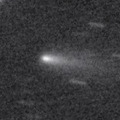
|
It brightened up to 13.9 mag in May (May 14, Chris Wyatt). Now it is fading. It has already faded down to 16.1 mag (July 11, J. Aledo). It will be fainter than 18 mag soon.
Date(TT) R.A. (2000) Decl. Delta r Elong. m1 Best Time(A, h)
Aug. 8 21 11.85 -11 40.6 0.702 1.714 175 17.9 0:09 ( 0, 43)
Aug. 15 21 5.62 -12 38.2 0.759 1.768 172 18.3 23:31 ( 0, 42)
|
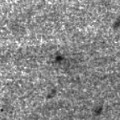
|
Now it is 18.9 mag (July 13, A. Maury, J.-G. Bosch, T. Noel, J.-F. Soulier). It was expected to brighten rapidly, and to be observable at 16 mag in good condition from summer to winter. But actually, it is much fainter than predicted.
Date(TT) R.A. (2000) Decl. Delta r Elong. m1 Best Time(A, h)
Aug. 8 23 34.22 -14 19.4 1.588 2.488 145 18.5 2:31 ( 0, 41)
Aug. 15 23 30.50 -14 3.9 1.511 2.453 152 18.3 2:00 ( 0, 41)
|
|
![]()
 61P/Shajn-Schaldach
61P/Shajn-Schaldach C/2013 V4 ( Catalina )
C/2013 V4 ( Catalina ) C/2010 S1 ( LINEAR )
C/2010 S1 ( LINEAR ) 117P/Helin-Roman-Alu 1
117P/Helin-Roman-Alu 1 44P/Reinmuth 2
44P/Reinmuth 2 6P/d'Arrest
6P/d'Arrest 319P/2015 G1 ( Catalina-McNaught )
319P/2015 G1 ( Catalina-McNaught ) C/2011 J2 ( LINEAR )
C/2011 J2 ( LINEAR ) 325P/2015 J4 ( Yang-Gao )
325P/2015 J4 ( Yang-Gao ) 162P/Siding Spring
162P/Siding Spring 230P/LINEAR
230P/LINEAR C/2015 K1 ( MASTER )
C/2015 K1 ( MASTER ) 221P/LINEAR
221P/LINEAR 174P/(60558) 2000 EC98 ( Echeclus )
174P/(60558) 2000 EC98 ( Echeclus ) 299P/2014 D2 ( Catalina-PanSTARRS )
299P/2014 D2 ( Catalina-PanSTARRS ) C/2014 AA52 ( Catalina )
C/2014 AA52 ( Catalina ) C/2014 W5 ( Lemmon-PanSTARRS )
C/2014 W5 ( Lemmon-PanSTARRS ) C/2013 G3 ( PanSTARRS )
C/2013 G3 ( PanSTARRS ) 7P/Pons-Winnecke
7P/Pons-Winnecke 220P/McNaught
220P/McNaught P/2015 F1 ( PanSTARRS )
P/2015 F1 ( PanSTARRS ) 151P/Helin
151P/Helin 51P/Harrington
51P/Harrington 205P/Giacobini
205P/Giacobini C/2012 LP26 ( Palomar )
C/2012 LP26 ( Palomar ) P/2002 Q1 ( Van Ness )
P/2002 Q1 ( Van Ness ) 218P/LINEAR
218P/LINEAR 50P/Arend
50P/Arend![]()















































